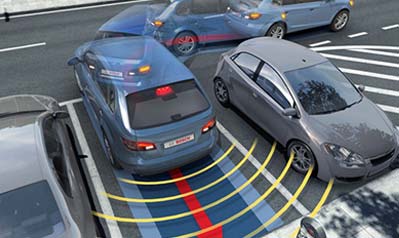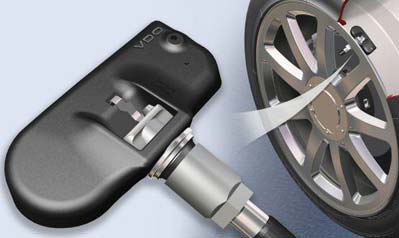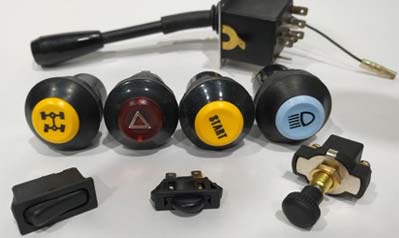Welcome to May Auto Parts Manufacturing & Supplying (MAPMS)
Welcome to May Auto Parts Manufacturing & Supplying (MAPMS)
Airbag pressure sensor, also known as the airbag control module, is a crucial signal input core in the SRS supplementary restraint system. Its primary duty is to monitor and identify sudden deceleration, collisions, or impacts that may trigger the vehicle's airbags to deploy. In the event of an accident, it plays a key role in protecting the occupants from harm, making it an indispensable part of the vehicle's safety system.
Typically, the airbag pressure sensor is placed at the central location of the vehicle, such as under the driver or front passenger seat, or in the core area of the dashboard. This layout allows the sensor to comprehensively and efficiently monitor the overall state of the vehicle. The airbag pressure sensor integrates several advanced technologies, including accelerometers to measure the vehicle's deceleration level, impact sensors to detect the strength of physical impacts, and microprocessors to process these complex data and make decisions on whether to deploy the airbags.
When the airbag pressure sensor captures the signal of an external impact, it immediately transmits this signal to the igniter section of the inflator. Imagine the igniter as a "spark plug" that ignites the detonating cord within the inflator assembly. Subsequently, the detonating cord is activated, which then ignites the main charge, also known as the primary propellant. This propellant traditionally includes sodium azide and oxidizers, some variations use compressed nitrogen or argon gas, or a combination of both. As the primary propellant burns, it produces a large amount of nitrogen gas, which rapidly expands and is channeled into the airbag cushion, initially forming the shape of the airbag. The inflator continues to increase the amount of gas directed into the airbag and gradually increases the gas pressure, thereby starting to push the airbag cover. As the pressure on the airbag cover gradually increases, its material begins to stretch and deform, eventually tearing along the pre-designed weak seam areas. As these tears widen, the cover door opens, creating an optimum passage for the airbag to deploy. The air pressure continues to increase, causing the airbag to rapidly inflate until its fabric part becomes taut. When the passenger contacts and compresses the inflated airbag, it provides protection; through the viscous damping effect of the gas, it can absorb and dissipate the energy of the passenger moving forward due to the collision. Meanwhile, the excess gas in the airbag is discharged through special exhaust ports, ensuring no harm to the passenger.
Types of airbag sensors include airbag crash sensors, airbag pressure sensors, airbag impact sensors, and airbag front sensors, which work together to detect various physical changes in the vehicle during a collision and quickly trigger the deployment of airbags to protect the safety of passengers.
Currently, there is no unified standard for airbags in the domestic market, so each major automobile manufacturer sets the airbag deployment conditions based on the characteristics of their respective models. Generally speaking, whether an airbag can deploy normally mainly depends on the angle and speed of the collision.
For most models, the airbag will deploy when the following three conditions are met: firstly, the vehicle speed must reach a preset threshold, for example, above 50km/h; secondly, the collision point must be within the sensor's sensing range, typically a 60° sector area directly in front of the vehicle; finally, the object of impact must be a hard, fixed object, such as a rock, wall, etc.
Notably, some models have a special feature that prevents airbag deployment when the passenger is not wearing a seatbelt. This is to protect the passenger in certain situations, as without a seatbelt, the passenger may be thrown forward due to inertia, and an airbag deployment in such a case could cause additional injury.
However, the airbag pressure sensor is merely a passive safety feature and must work in conjunction with a seatbelt to maximize risk reduction. Studies have shown that airbags can reduce head injury rates by about 25% and facial injury rates by about 80% in vehicle collisions. Nevertheless, it cannot guarantee 100% safety. Therefore, we strongly recommend that every driver and passenger develop the habit of safe driving, as it is the best way to ensure travel safety.
Popular Automotive Spare Parts
 DIY Ignition System Maintenance: Save Money with Quality Parts
READ MORE >
DIY Ignition System Maintenance: Save Money with Quality Parts
READ MORE >
 How Often Should a Car Fuel Filter Be Replaced for Optimal Performance?
READ MORE >
How Often Should a Car Fuel Filter Be Replaced for Optimal Performance?
READ MORE >
 Analysis of the Working Principle of Car Air Conditioner Compressor
READ MORE >
Analysis of the Working Principle of Car Air Conditioner Compressor
READ MORE >